▼For more exciting recommendations, please follow us▼
Learning programming is essentially learning high-level languages, which are computer languages designed for humans.
However, computers do not understand high-level languages; they must be converted into binary code through a compiler to run. Knowing a high-level language does not equate to understanding the actual execution steps of a computer.
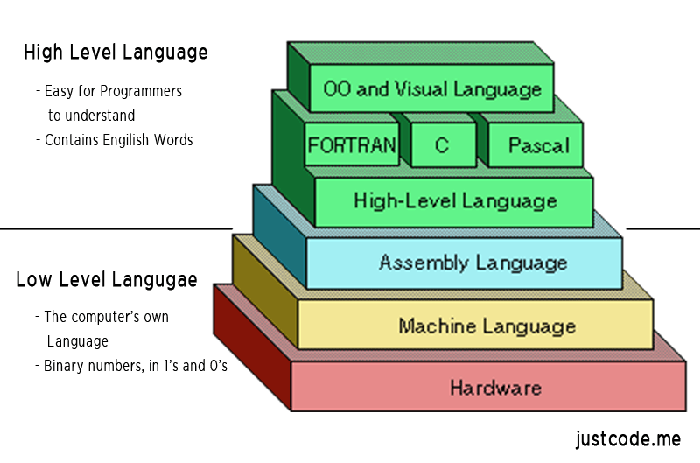
The only language that computers can truly understand is low-level language, which is specifically used to control hardware. Assembly language is a low-level language that directly describes/controls the operation of the CPU. If you want to understand what the CPU is actually doing and the steps of code execution, you must learn assembly language.
Assembly language is not easy to learn, and even concise introductions are hard to find. Below, I will attempt to write the easiest-to-understand assembly language tutorial, explaining how the CPU executes code.
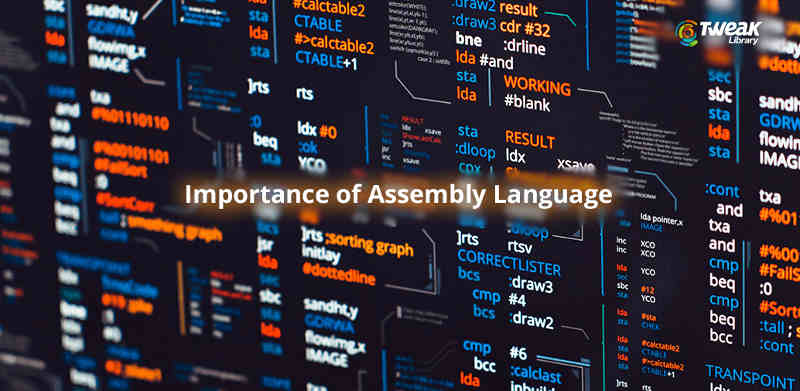
1. What is Assembly Language?
We know that the CPU is only responsible for calculations and does not possess intelligence. When you input an instruction, it executes it once and then stops, waiting for the next instruction.
These instructions are in binary, known as opcodes; for example, the addition instruction is 00000011. The role of the compiler is to translate the program written in high-level language into a series of opcodes.
For humans, binary programs are unreadable, making it impossible to see what the machine has done. To solve the readability issue and occasional editing needs, assembly language was born.
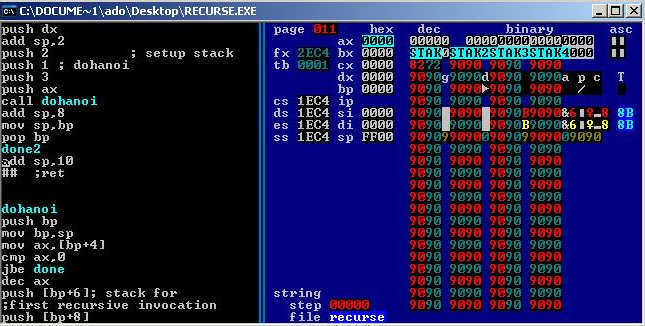
Assembly language is the textual form of binary instructions, with a one-to-one correspondence with the instructions. For example, the addition instruction 00000011 is written as ADD in assembly language. Once converted back to binary, assembly language can be directly executed by the CPU, making it the lowest-level low-level language.
2. Origins
In the early days, programming involved manually writing binary instructions and inputting them into the computer through various switches. For instance, to perform addition, one would press the addition switch. Later, the invention of the punch card machine allowed binary instructions to be automatically input into the computer by punching holes in a card.
To address the readability issue of binary instructions, engineers wrote those instructions in octal. Converting binary to octal is straightforward, but octal is also not very readable. Naturally, it eventually returned to using text, with the addition instruction written as ADD. Memory addresses were no longer directly referenced but represented by labels.
This added an extra step, requiring these textual instructions to be translated into binary, a process known as assembling, and the program that completes this step is called an assembler. The text it processes is naturally called assembly code. After standardization, it was referred to as assembly language, abbreviated as asm, and translated into Chinese as 汇编语言.
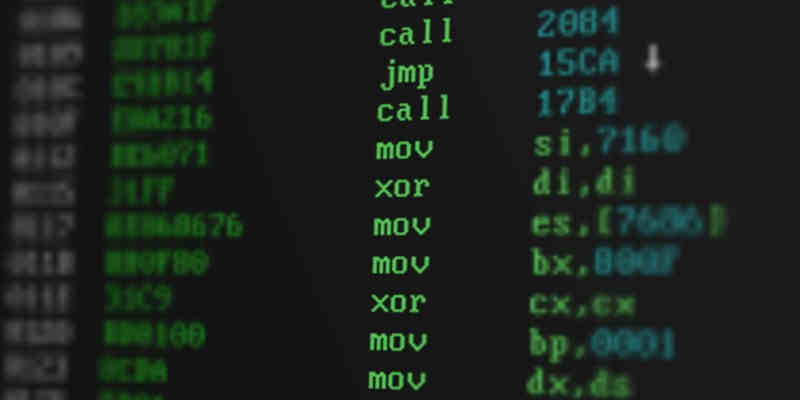
Each CPU has different machine instructions, and thus the corresponding assembly language also differs. This article introduces the most common x86 assembly language, which is used by Intel’s CPUs.
3. Registers
To learn assembly language, one must first understand two concepts: registers and memory models.
First, let’s look at registers. The CPU is responsible for computation but not for storing data. Data is generally stored in memory, and the CPU reads and writes data from memory when needed. However, the CPU’s computation speed is much faster than the read/write speed of memory. To avoid being slowed down, the CPU comes with Level 1 and Level 2 caches. Essentially, the CPU cache can be viewed as faster memory for reading and writing.
However, the CPU cache is still not fast enough, and the addresses of data in the cache are not fixed, which means the CPU must address each time it reads or writes, which can also slow down speed. Therefore, in addition to the cache, the CPU also has registers to store the most frequently used data. This means that the most frequently read and written data (such as loop variables) will be placed in registers, and the CPU will prioritize reading and writing from registers before exchanging data with memory.
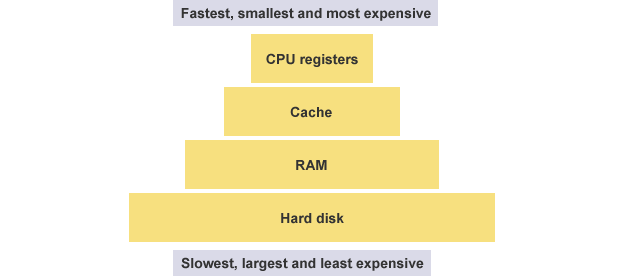
Registers do not distinguish data by address but by name. Each register has its own name, and we tell the CPU which specific register to retrieve data from, making this the fastest method. Some compare registers to the CPU’s zero-level cache.
4. Types of Registers
Early x86 CPUs had only 8 registers, each with different purposes. Now, there are over 100 registers, which have become general-purpose registers without specific designations, but the names of the early registers have been preserved.
- EAX
- EBX
- ECX
- EDX
- EDI
- ESI
- EBP
- ESP
Among these 8 registers, the first seven are general-purpose. The ESP register has a specific purpose, storing the address of the current stack (see the next section).
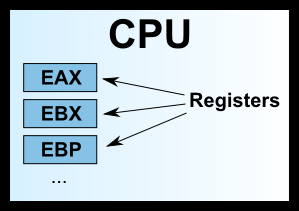
We often see names like 32-bit CPU and 64-bit CPU, which actually refer to the size of the registers. A 32-bit CPU has a register size of 4 bytes.
5. Memory Model: Heap
Registers can only hold a small amount of data, and most of the time, the CPU needs to instruct registers to directly exchange data with memory. Therefore, in addition to registers, it is essential to understand how memory stores data.
When a program runs, the operating system allocates a segment of memory to store the program and the data generated during execution. This segment of memory has a starting address and an ending address, for example, from 0x1000 to 0x8000, where the starting address is the smaller one and the ending address is the larger one.

During the program’s execution, for dynamic memory allocation requests (such as creating new objects or using the malloc command), the system will allocate a portion of the pre-allocated memory to the user, with the specific rule being to allocate from the starting address (in reality, the starting address will have a segment of static data, which we will ignore here). For example, if the user requests 10 bytes of memory, it will be allocated starting from the address 0x1000, extending to address 0x100A. If another request for 22 bytes is made, it will be allocated up to 0x1020.
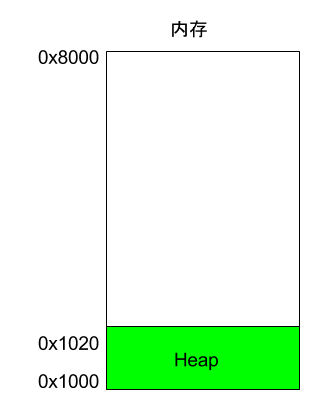
This memory area allocated due to user requests is called the Heap. It grows from the starting address upwards (from lower addresses to higher addresses). An important characteristic of the Heap is that it does not disappear automatically; it must be manually released or reclaimed by a garbage collection mechanism.
6. Memory Model: Stack
In addition to the Heap, other memory usage is called the Stack. Simply put, the Stack is the memory area temporarily occupied due to function execution.
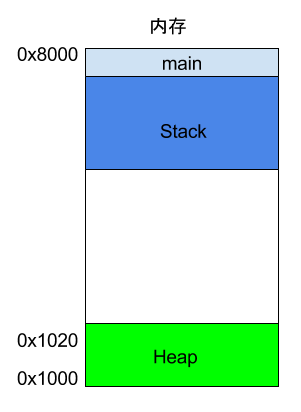
Consider the following example.
int main() {
int a = 2;
int b = 3;
}
In the above code, when the system starts executing the main function, it will create a frame in memory for it, where all internal variables of main (such as a and b) are stored. Once the main function finishes executing, that frame will be reclaimed, releasing all internal variables and no longer occupying space.

What happens if a function calls another function internally?
int main() {
int a = 2;
int b = 3;
return add_a_and_b(a, b);
}
In the above code, the main function calls the add_a_and_b function. When it reaches this line, the system will also create a new frame for add_a_and_b to store its internal variables. This means that at this point, there are two frames existing simultaneously: main and add_a_and_b. Generally, the number of frames corresponds to the number of layers in the call stack.
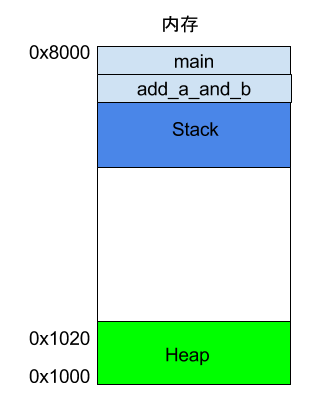
Once add_a_and_b finishes executing, its frame will be reclaimed, and the system will return to the point where the main function was interrupted, continuing execution. This mechanism allows for layered function calls, with each layer able to use its own local variables.
All frames are stored in the Stack. Since frames are stacked on top of each other, the Stack is called a stack. Creating a new frame is called “pushing” onto the stack; in English, it is referred to as push. The recovery of the stack is called “popping”; in English, it is referred to as pop. The characteristic of the Stack is that the last frame pushed onto the stack is the first to be popped off (because the innermost function call ends first), which is known as a “last in, first out” data structure. Each time a function execution ends, a frame is automatically released, and when all functions finish executing, the entire Stack is released.
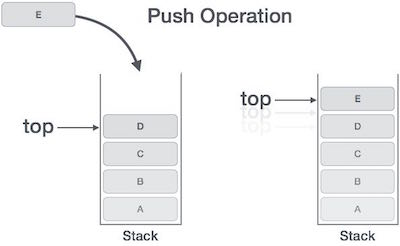
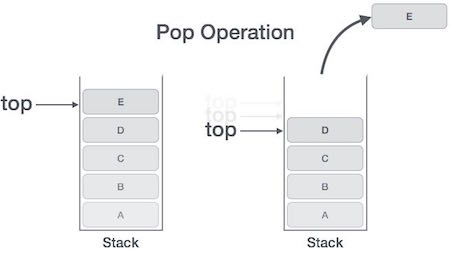
The Stack is allocated from the end address of the memory area, growing from higher addresses to lower addresses. For example, if the end address of the memory area is 0x8000, and the first frame is assumed to be 16 bytes, the next allocation will start from 0x7FF0; if the second frame requires 64 bytes, the address will move to 0x7FB0.
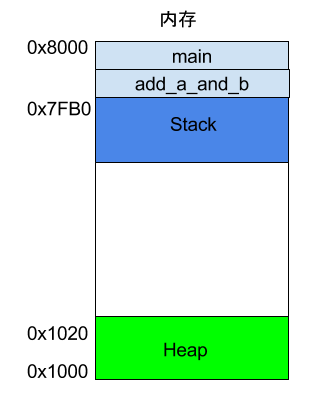
7. CPU Instructions
7.1 An Example
After understanding registers and memory models, we can look at what assembly language really is. Below is a simple program example.c.
int add_a_and_b(int a, int b) {
return a + b;
}
int main() {
return add_a_and_b(2, 3);
}
gcc will convert this program into assembly language.
$ gcc -S example.c
After executing the above command, a text file example.s will be generated, which contains assembly language with dozens of lines of instructions. To put it simply, a simple operation in a high-level language may consist of several, or even dozens of CPU instructions at the lower level. The CPU executes these instructions sequentially to complete this operation.
After simplification, example.s looks something like this.
_add_a_and_b:
push %ebx
mov %eax, [%esp+8]
mov %ebx, [%esp+12]
add %eax, %ebx
pop %ebx
ret
_main:
push 3
push 2
call _add_a_and_b
add %esp, 8
ret
As you can see, the two functions in the original program, add_a_and_b and main, correspond to the two labels _add_a_and_b and _main. Each label contains the CPU execution flow for that function.
Each line represents an operation executed by the CPU. It can be divided into two parts; let’s take one line as an example.
push %ebx
This line contains the push instruction, and %ebx is the operand used by this instruction. A CPU instruction can have zero to multiple operands.
Next, I will explain this assembly program line by line. I recommend that readers copy this program into another window to avoid scrolling back up while reading.
7.2 Push Instruction
By convention, the program starts executing from the _main label, at which point a frame for main will be established on the Stack, and the address pointed to by the Stack will be written into the ESP register. If there is data to be written into the main frame, it will be written at the address stored in the ESP register.
Then, the first line of code begins execution.
push 3
The push instruction is used to place an operand onto the Stack, in this case, writing 3 into the main frame.
Although it seems simple, the push instruction actually has a preceding operation. It first retrieves the address in the ESP register, subtracts 4 bytes from it, and then writes the new address into the ESP register. The subtraction is because the Stack grows from high to low addresses, and 4 bytes is because the type of 3 is int, which occupies 4 bytes. After obtaining the new address, 3 will be written into the first four bytes of that address.
push 2
The second line is similar; the push instruction writes 2 into the main frame, right next to where 3 was written. At this point, the ESP register will again subtract 4 bytes (cumulatively subtracting 8).
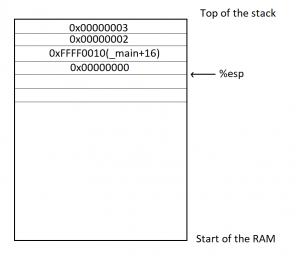
7.3 Call Instruction
The third line’s call instruction is used to invoke a function.
call _add_a_and_b
The above code indicates a call to the add_a_and_b function. At this point, the program will look for the _add_a_and_b label and create a new frame for that function.
Next, the code for _add_a_and_b begins execution.
push %ebx
This line indicates that the value in the EBX register is written into the _add_a_and_b frame. This is because this register will be used later, so its value is retrieved first and will be written back after use.
At this point, the push instruction will again subtract 4 bytes from the address in the ESP register (cumulatively subtracting 12).
7.4 Mov Instruction
The mov instruction is used to write a value into a specific register.
mov %eax, [%esp+8]
This line of code indicates that the address in the ESP register is increased by 8 bytes to obtain a new address, and then data is retrieved from the Stack at that address. Based on previous steps, it can be inferred that the value retrieved here is 2, which is then written into the EAX register.
The next line of code does the same thing.
mov %ebx, [%esp+12]
The above code adds 12 bytes to the value in the ESP register, retrieves data from the Stack at that address, which this time is 3, and writes it into the EBX register.
7.5 Add Instruction
The add instruction is used to add two operands and write the result into the first operand.
add %eax, %ebx
The above code adds the value in the EAX register (which is 2) to the value in the EBX register (which is 3), resulting in 5, which is then written back into the first operand, the EAX register.
7.6 Pop Instruction
The pop instruction is used to retrieve the most recently written value from the Stack (i.e., the value at the lowest address) and write it to the specified location of the operand.
pop %ebx
The above code indicates that the most recently written value from the Stack (i.e., the original value of the EBX register) is retrieved and written back into the EBX register (since the addition is complete, the EBX register is no longer needed).
Note that the pop instruction will also add 4 bytes to the address in the ESP register, effectively reclaiming 4 bytes.
7.7 Ret Instruction
The ret instruction is used to terminate the current function’s execution and return control to the upper function. In other words, the current function’s frame will be reclaimed.
ret
As the add_a_and_b function terminates, the system returns to the point where the main function was interrupted, continuing execution.
add %esp, 8
The above code indicates that 8 bytes are manually added to the address in the ESP register and written back into the ESP register. This is because the ESP register points to the start address of the Stack, and the previous pop operation has already reclaimed 4 bytes, so here it reclaims another 8 bytes, effectively reclaiming all.
ret
Finally, the main function ends execution, and the ret instruction exits the program.
After reading this article, what do you understand about assembly language? See, assembly is not that difficult~

👉 A few failed codes👉Microcontroller programming techniques—state machine programming👉How to layer multi-layer boards? How to design PCBs for optimal EMC performance?👉How to systematically design hardware circuits? Sharing some experiences

Click “Read the original text” for more shares, and feel free to share, bookmark, like, and view.